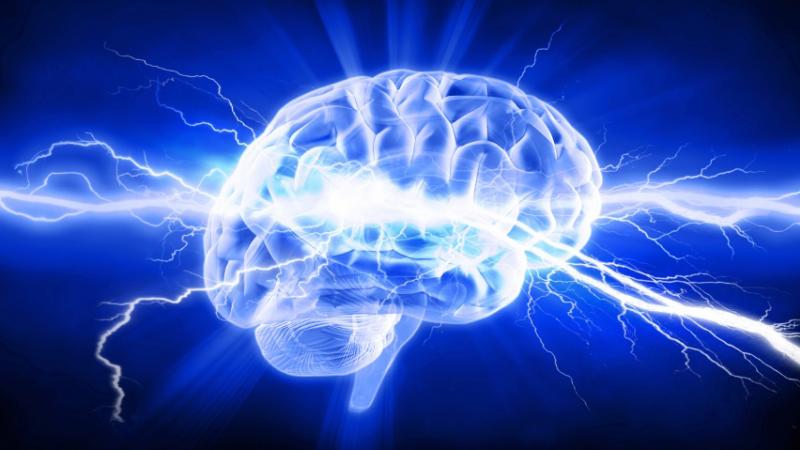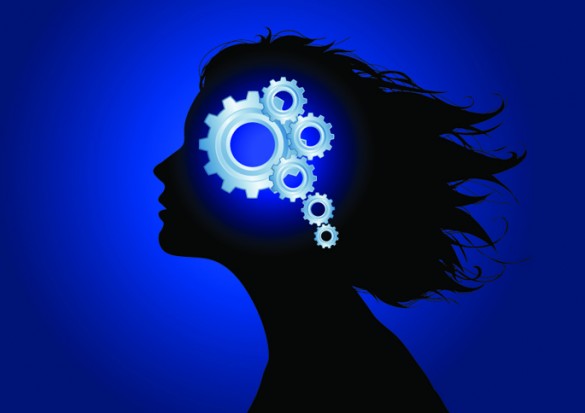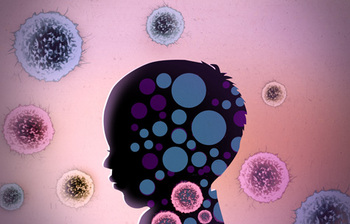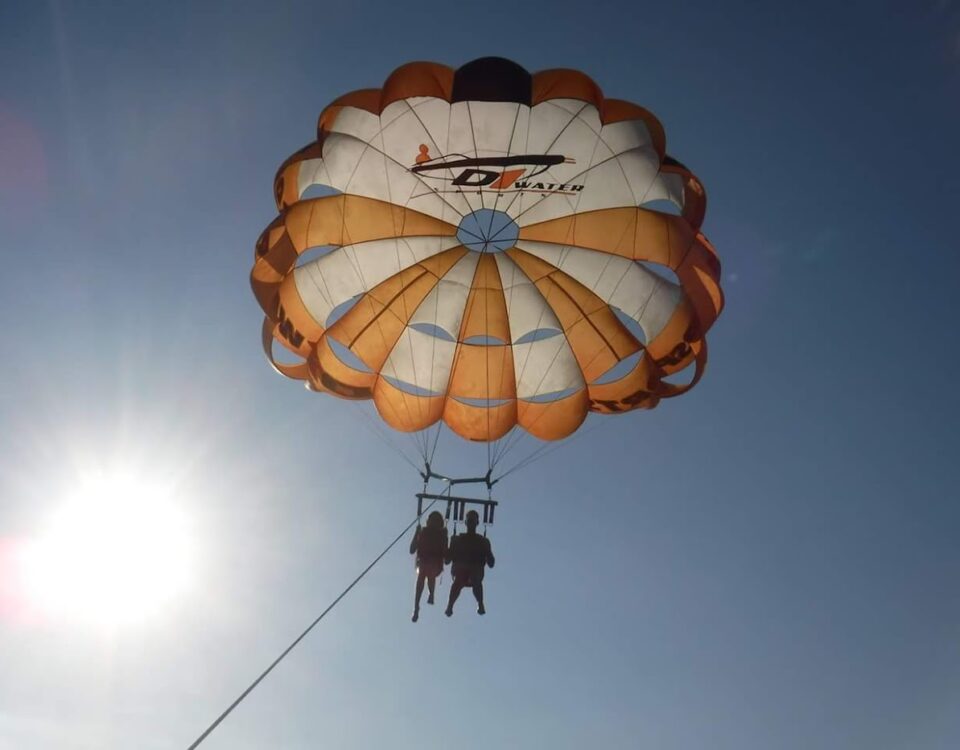
TMS vs ECT: Systematic Review & Meta-Analysis
July 21, 2014
Cognitive Behavioural Therapy – CBT – Origins
August 23, 2014Introduction - What is Autism?
From autism.org.uk: "Autism is a lifelong developmental disability that affects how a person communicates with, and relates to, other people. It also affects how they make sense of the world around them. It is a spectrum condition, which means that, while all people with autism share certain difficulties, their condition will affect them in different ways. Some people with autism are able to live relatively independent lives but others may have accompanying learning disabilities and need a lifetime of specialist support. People with autism may also experience over- or under-sensitivity to sounds, touch, tastes, smells, light or colours. Asperger syndrome is a form of autism. People with Asperger syndrome are often of average or above average intelligence. They have fewer problems with speech but may still have difficulties with understanding and processing language."
Basic Brain Structure
To get a proper insight into autism it is useful to start with the basic structure of the brain. The brain and spinal cord make-up the central nervous system (CNS), which is the main control centre of the body, and is the instrument of emotion, behaviour, consciousness and memory. Neurotransmitters are an important piece of the brain and Autism puzzle because they too are involved in brain and body function. Dopamine and Serotonin are two of the neurotransmitters that may have a part to play in the aetiology of Autism. Serotonin is involved in sleep patterns, body temperature and mood fluctuation. Dopamine is an inhibitory neurotransmitter and is associated with reward mechanisms in the brain. GABA is also an inhibitory neurotransmitter that is connected to anxiety issues if there is too little in the brain. One can then go on to explain the parts of the brain and their respective functions. The cerebellum is responsible for coordinating muscle activity and is involved in attentional processes and some types of learning, speech, and involuntary functions. A little lower is the brain stem which is concerned with temperature and sleep cycles, hearing and smiling. The limbic system contains a number of interconnected structures including the amygdala, cingulate gyrus which is above the corpus callosum, hippocampus, thalamus, hypothalamus and the caudate nucleus and is involved in emotional expression, memory storage and recall. Gray and white matter have been implicated as having some sort of role to play in the aetiology of Autism. Gray matter is found in the spinal cord and contain interneurons that allow complex reflexes to take place. White matter, also found in the spinal cord but surrounding the gray matter, contains myelinated axon fibres that pass to and from the brain. As discussed earlier, the limbic system affects emotional behavior. Margaret Bauman reported “increased cell packing density” in many areas of the brain that are in involved in the limbic system as well as the cerebellar circuits that are located in the cerebellum. She goes on to claim that these lesions may well be related to the marked difficulties in social interaction, language and learning that is seen in Autism. This research is supported by Bailey et. al. who also provided evidence of increased cell packing density.
Structures affected in Autism
Recent studies show that the Autistic brain grows at an unusual rate before the age of three, and then slows again to a normal rate of growth. Some imaging studies suggest that certain areas of the brain are larger than is typical. Courchesne et. al. built on this finding by using Magnetic Resonance Imaging technology (MRI) and previous evidence. They and others (Dementieva et. al.) state that at birth, head circumference in Autism, and therefore brain size, were found to be either equal or somewhat smaller to the normal standard. During the first year of life the brain with Autism grows at an “abnormally accelerated rate such that by the end of this critical period at 2–3 years of age, quantitative MRI studies show it to be about 10% larger than normal”. (Courchesne et. al.) This concept of head circumference is further developed with the introduction of gray and white matter. Earlier, gray and white matter in the spinal cord was discussed as being implicated in the aetiology of Autism and at the tissue level, brain enlargement reflects both increased cerebral gray and white matter. (Courchesne et. al. and Hazlett et. al.) Both cerebral and cerebellar white matter amounts in children with Autism have been found to be oddly enlarged. In contrast, the cerebellar vermis, which is principally gray matter, is reduced in size. Heather Hazlett states that enlargement during this period is consistent with either a “decrease in the normal loss of neuronal processes (dendritic pruning) or over-exuberant dendritic arborization”. The data presented on the possible timing of brain enlargement in Autism, before the age of three years, may also raise the possibility that the onset of Autistic symptoms may be associated with postnatal changes in brain volume. It seems apparent then that research of very early brain and behavior development in Autism has the potential to provide important signs significant to early discovery and early mechanisms underlying changes in the brain in Autism.
As alluded to earlier, many areas of the brain exhibit abnormalities in Autism, including the cerebellum. Previous studies have shown a reduction of Purkinje cells in the cerebellum, as well as abnormalities in the number and size of neurons in the deep cerebellar nuclei as a possible indicator of Autism. Earle et. al. found the Purkinje cell size in the cerebellum is reduced in patients with Autism. This decrease in cell size may correspond to Purkinje cell atrophy in Autism. Blatt et. al. along with others found there were reductions in Purkinje cell numbers in Autism. The oxidative stress theory hypothesizes that toxicity and oxidative stress may cause Autism in some cases by damaging Purkinje cells in the cerebellum after birth through the possibility of the involvement of glutathione. Also, there are patterns of aberration in the cerebellum and a large portion of research is pointing to this as a possible indicator of ASD.
Previously, the neurotransmitter GABA was discussed as being possibly involved in the aetiology of Autism as it resides in the cerebellar tissue in the cerebellum. Detection of “decreased protein levels of glutamate decarboxylase (GAD) 65 and 67 isoforms” (Blatt et. al.) in a person with Autisms’ cerebellar tissue brings up the likelihood that atypical management of GABA production in individual neurons may play a part in Autism. As reviewed earlier, reduction in Purkinje cells have been widely reported in Autism. The findings of Blatt et. al. found “decreased expression of GAD67 mRNA levels in cerebellar Purkinje cells in Autistic brains”. Basically, this means that alone, Purkinje cells or the neurotransmitter GABA can not complete the puzzle of the aetiology of Autism. More than likely, genetic factors and probably an insult of some kind will be influential in the more complete understanding of Purkinje cells in Autism.
There has been some exciting work with mirror neurons in the inferior frontal gyrus part of the brain that communicates with the limbic system. (Dapretto et. al.) The work suggests that mirror neurons which activate when a person watches the actions and emotions of another might be involved in deficits in empathy. The participants in the study who have ASD exhibited fired mirror neurons only when they themselves did an action not when they watched another person do the action. This abnormality is interesting in that it has been theorized by Dapretto et. al. that it may be possible to retrain the mirror neurons to respond appropriately to observed stimuli due to the fact that parts of the brain can take up the job of other parts of the brain. Though this is not a complete explanation of the cause of Autism it does offer insight into a core deficit of the disorder of having difficulty in social cognitive processes.
Fusiform face area (FFA) has come into the picture of the aetiology of Autism as well as the amygdala which is part of the limbic system in the brain. It has been surmised that there is early developmental failure in the amygdala in cases of Autism. In a study by Alexander et. al., this part of the brain that is involved in fear recognition, emotions, and memory may shrink in people with low functioning Autism. Other studies have suggested that the amygdala in children with Autism undergoes an abnormal postnatal development of “early enlargement and ultimately a reduced number of neurons”. Functional magnetic resonance imaging (fMRI) has found early developmental failure in Autism involving the amygdala, which concerns the development of areas in the brain that arbitrate social perception in the visual domain, in particular, the FFA. It has been argued that because of these failures in the amygdala and FFA, deficits in the development of face perception and social skills are sustained. A theory put forth by Simon Baron-Cohen and colleagues suggests that Autism is associated with “extreme male brain” which is possibly caused by a high exposure to male hormones during early development. Though there is continued mounting evidence for this theory, it is not a complete picture of the aetiology of Autism.
Environmental Causes
Environmental insults have also been implicated as another possible cause of Autism. However, because of the strong genetic research that is on-going, it is unlikely that a sole environmental trigger without some type of genetic disposition could suffice as the aetiology of such a complex disorder. Therefore, I will only briefly discuss the key theorized insults.
A debatable theory linking a form of intestinal inflammation in children with Autism with gastrointestinal symptoms to the Measles-Mumps-Rubella (MMR) vaccine arose in 1998. Though there is research that corroborates this finding the weight of the studies on the subject suggests the opposite, that there is no causal connection. Another theory of the aetiology of Autism proposes that a mercury-based preservative called thimerosal used in some vaccines, could be connected to Autism. More broadly, that mercury poisoning has been implicated as the cause. Mercury is a known neurotoxin and could be especially harmful to the developing brains of young children. Children with Autism often show signs of immunological dysfunction with allergies, gut disorders and frequent infections. The effects of mercury poisoning on the immune system provides one possible explanation of a cause though more substantial research in this area is needed. Teratogens are environmental agents that cause birth defects. Some agents that are known to cause other birth defects have also been found to be related to Autism. These include exposure of the embryo to thalidomide, a drug that was given to pregnant women who needed assistance controlling morning sickness. These cases are rare and no longer common.
Genetic Causes
It is very likely that Autism has a genetic basis. Twin studies have shown strength of genetic influences for Autism. Many studies have shown that parents from families with members with Autism are more likely to have a child with Autism. It is also the case that many families with one child with Autism are at increased risk of having more than one child with Autism. Anthony Monaco from the International Molecular Genetic Study of Autism Consortium (IMGSAC) has implicated chromosomes in Autism identified as numbers 2, 7, 16 and 17. The evidence for involvement of chromosomes 2 and 7 is particularly strong and chromosome 7 is likely to contain an Autism susceptibility locus. Michael Rutter reviewed a large body of research on “genome-wide screens” of samples of sibling pairs and reinforces what other professionals in the field have found; that the locus on chromosome 7q has several key candidate genes and that it is near the position of the “FOXP2 gene which has been shown to be responsible for an unusual familial speech and language disorder”. He goes on to evaluate candidate genes and their high potential. They have a role with neurotransmitters and are linked with chromosomal abnormalities connected with Autism. Though this research is promising and the geneticists should not rule out candidate gene potential, the studies need to be replicated. Bauman et. al. agrees with Rutter’s review and adds that exciting findings into the linkage of the “serotonin transporter gene to chromosome 17 and the homeobox transcription factor Engrailed 2” are hopefuls in the genetic arena as well.
The Human Genome Project (HGP) was a landmark venture to map a genomic and physical diagram of the human genome. The Autism Genome Project (AGP) Consortium is a branch off of the HGP and involves four existing consortia: Autism Genetics Cooperative (AGC), Autism Genetic Resource Exchange (AGRE) Consortium, Collaborative Programs of Excellence (CPEA), and the International Molecular Genetic Study of Autism Consortium (IMGSAC) who also involve more than 120 scientists in l9 countries. This relationship is important in that together, these groups are attempting to figure the Autism gene map and have helped make great strides putting the Autism puzzle together.
Conclusion
It is most likely that genetics and environmental factors interact to cause Autism and one factor would unlikely be causative without the influence of the other. Though Autism's genetic factors explain some of the Autism risk, they do not explain all of it. To date, researchers have not yet pin pointed a clear-cut environmental trigger. There are theories based on environmental factors that have been proposed however what is known to date is that continued research is needed. The bottom line is that no one is certain as to the cause of Autism. It is unlikely that any one factor will be implicated. In the future, the discovery of biological pathways will, no doubt, change the ways in which Autism is diagnosed and may well lead to new ways of classifying diseases that, in turn, will facilitate further scientific progress.

